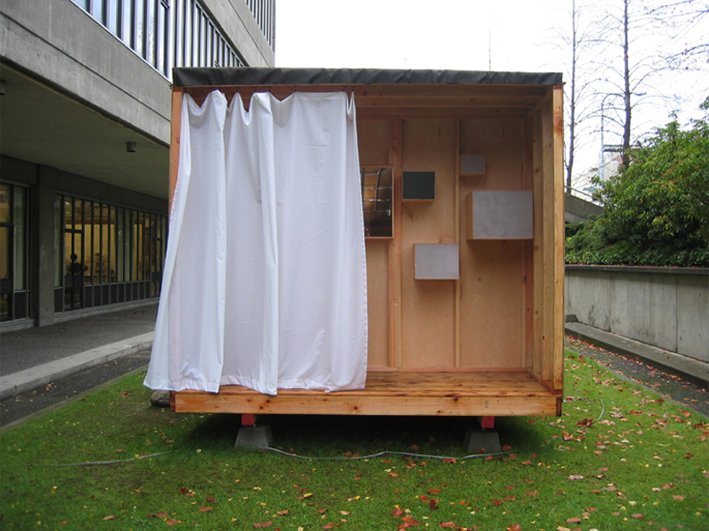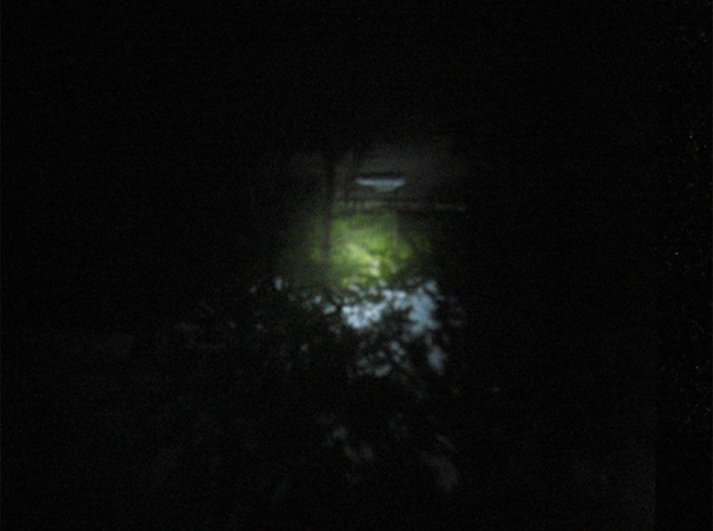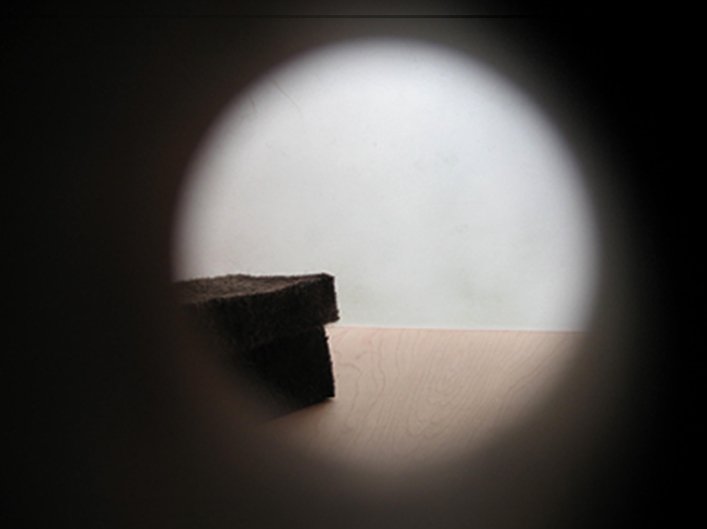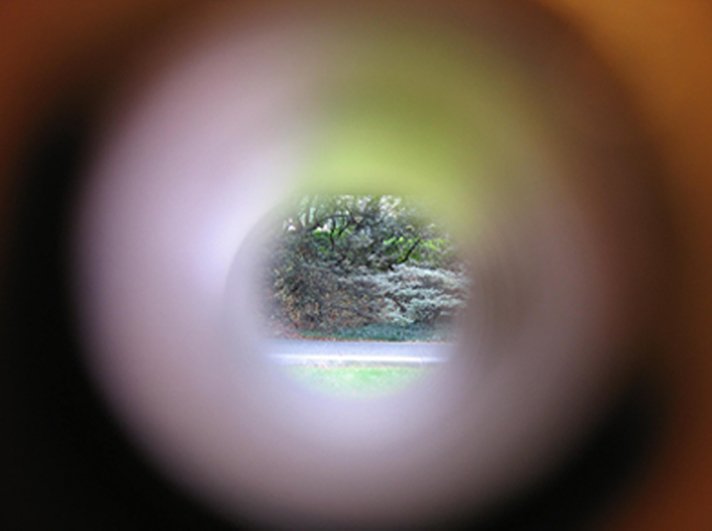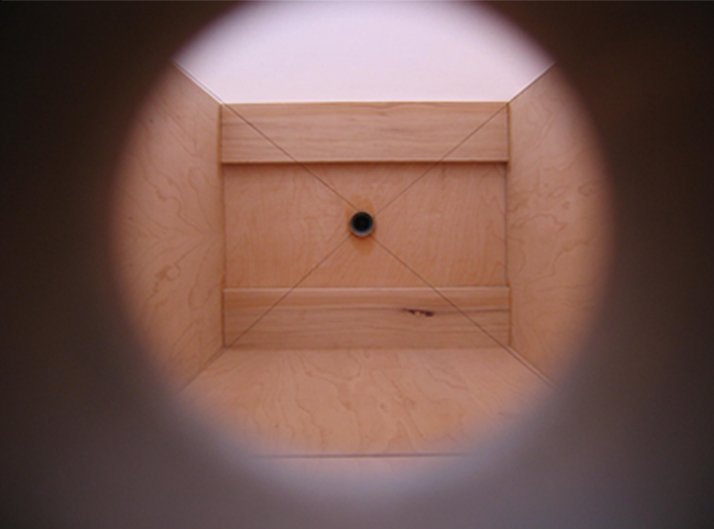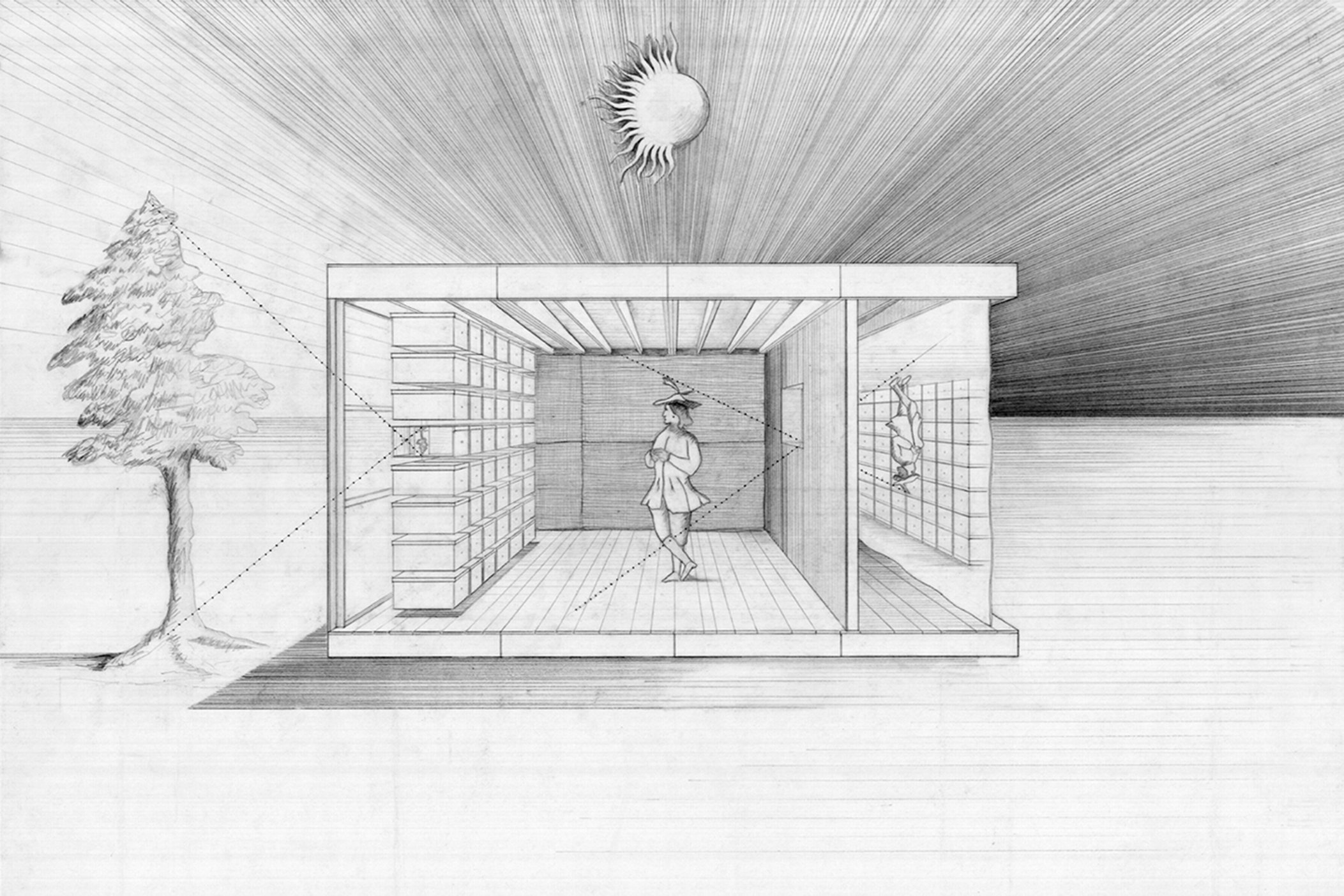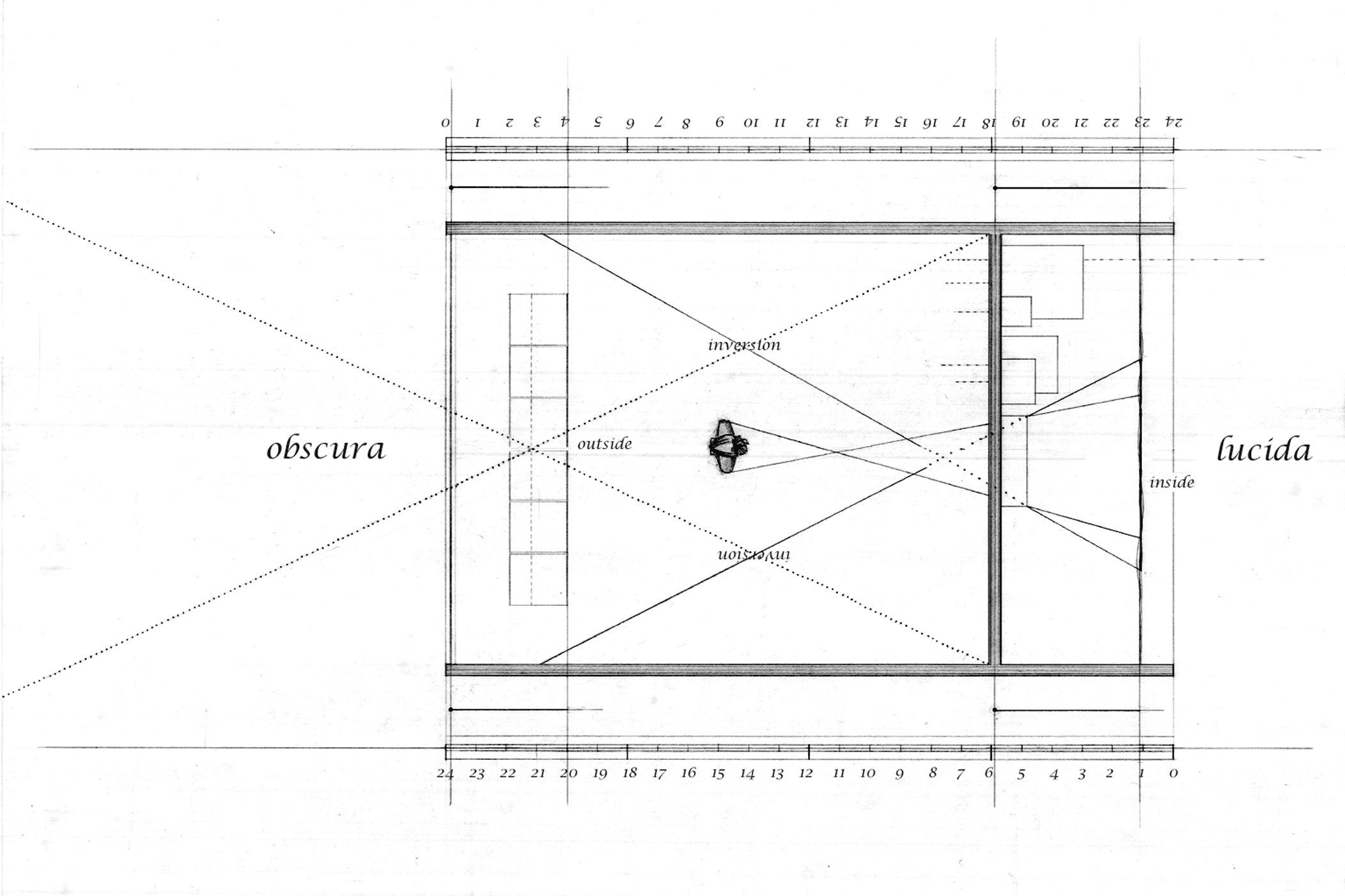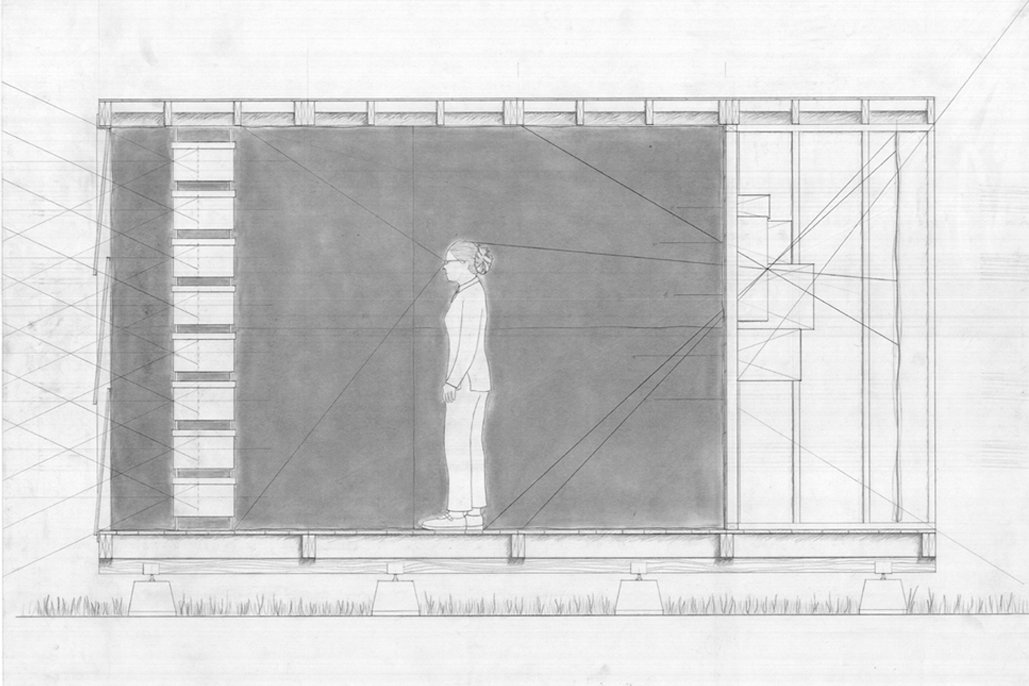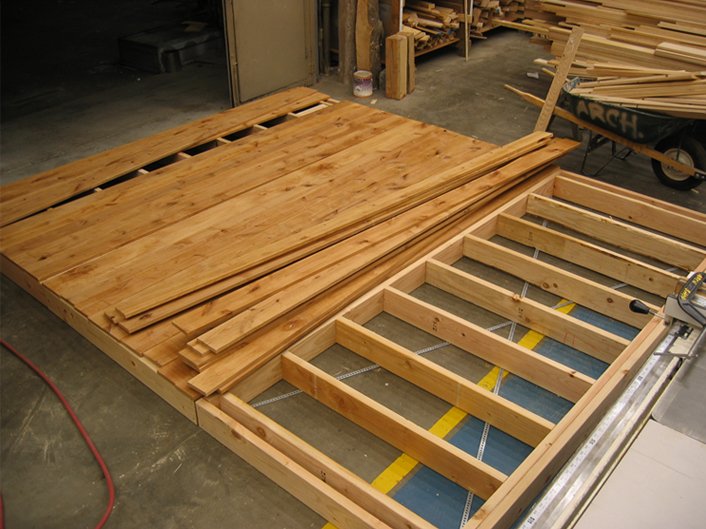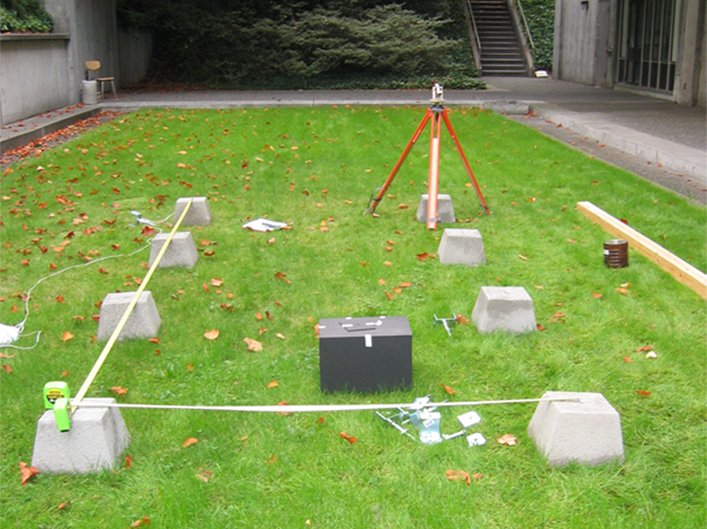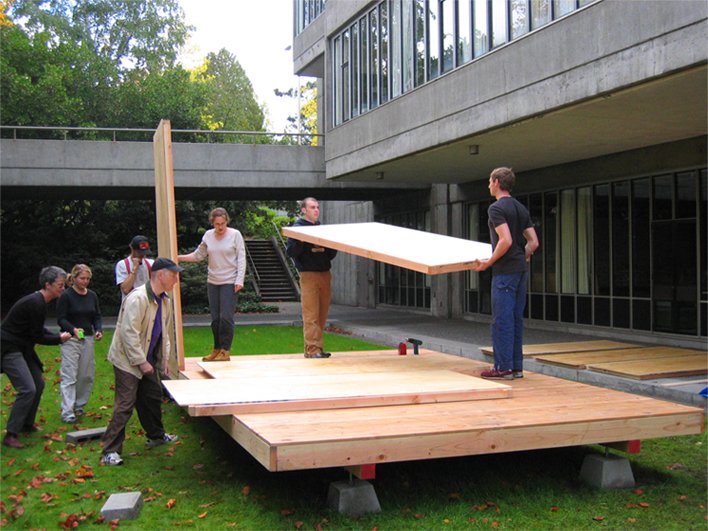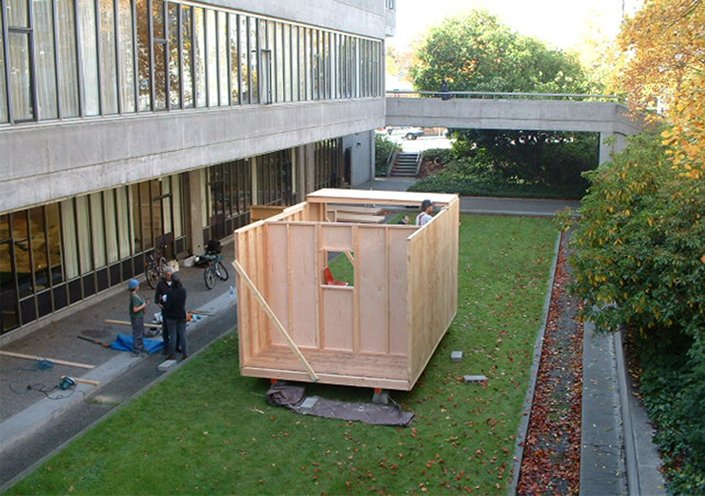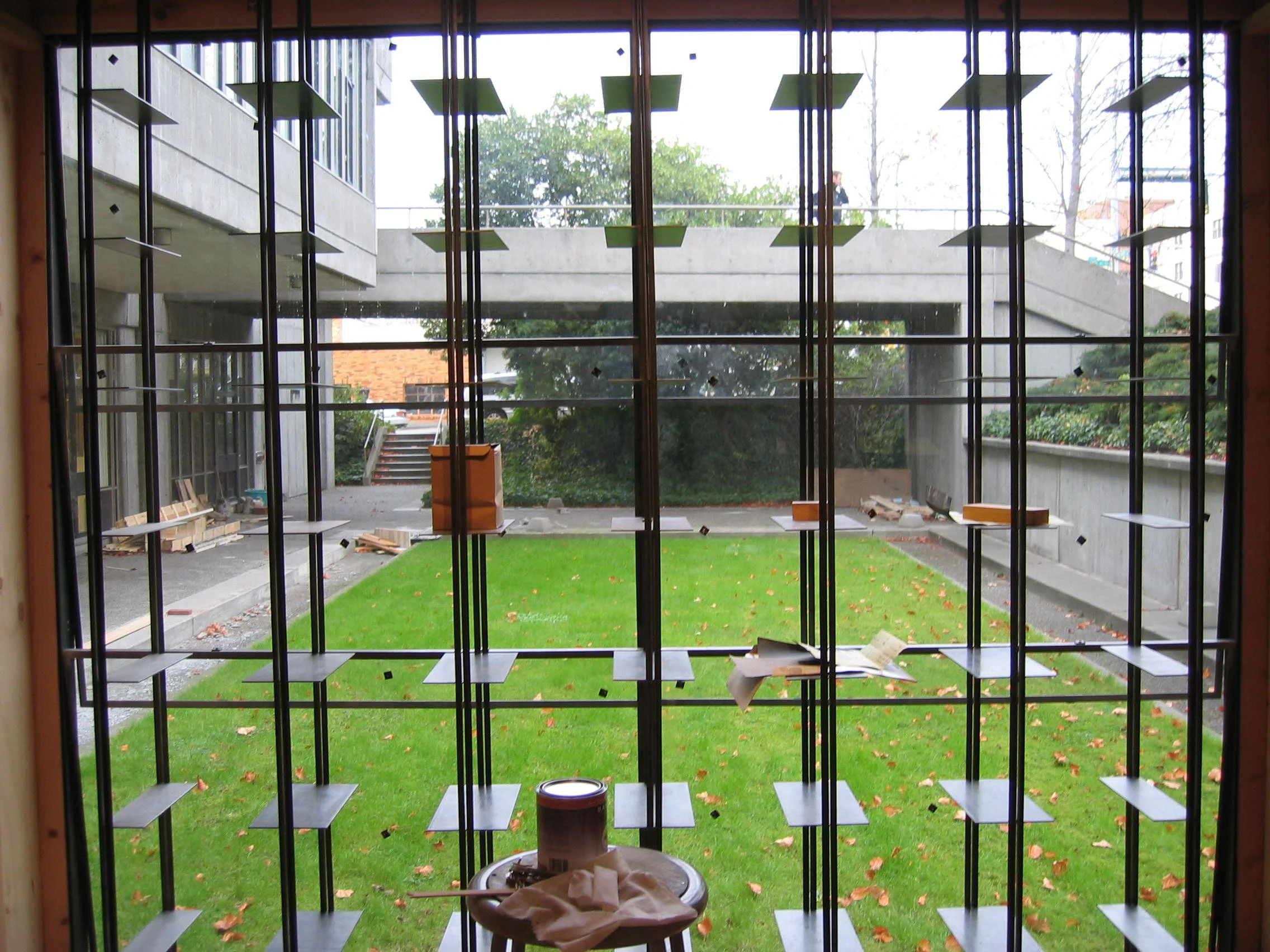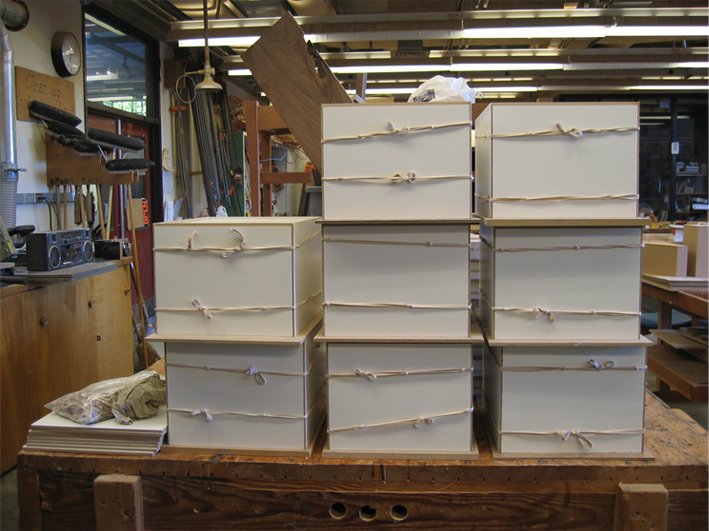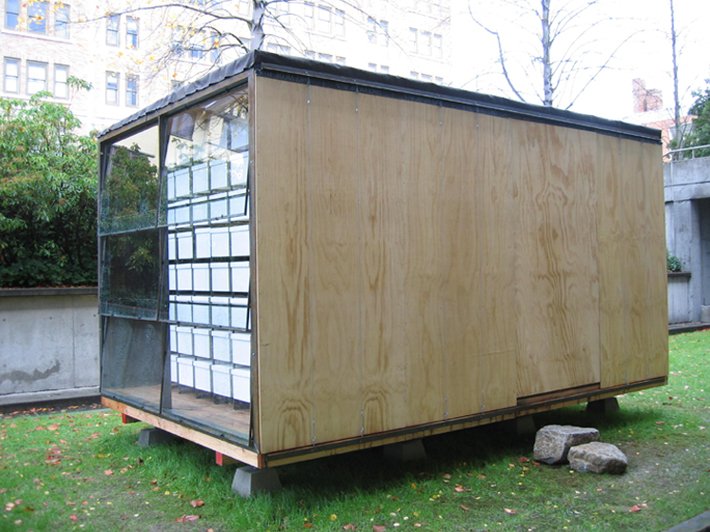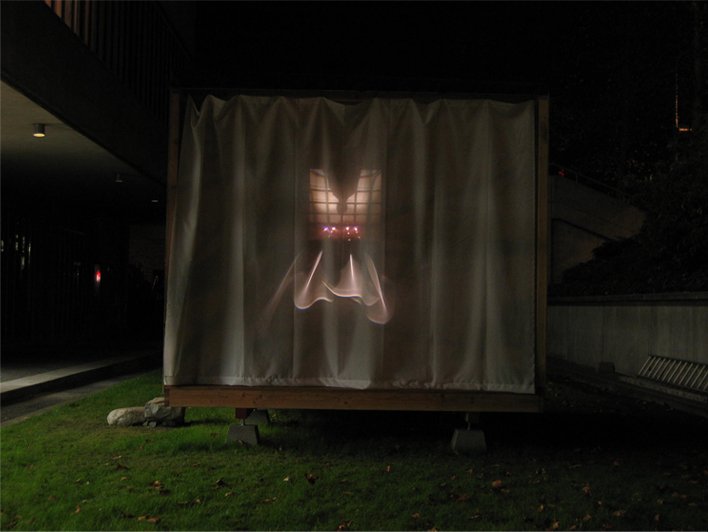EIGHT SIGHTED BOX
This structure was the result of an investigation of the relationship between objects and ideas. The project began as a study of phenomenology and sought an architectural response that addressed perception and imagination, the two modes of consciousness described by Jean-Paul Sartre in Psychology of Imagination (1935). It takes up Merleau-Ponty’s rendering of visibility, which is founded on the idea of the body as a sensible sentient. Because the body sees and can be seen it is caught up in the general visibility of what he calls “the flesh” of the world (la chair).
Eight Sighted Box is composed of a large interior room and a smaller exterior room. It employs Renaissance techniques to subvert the distinction between inside and outside. An array of 48 cast plaster cameras obscura is placed in front of the structure’s fully glazed west end. In the daylight a small screen inside each camera captures an image of the world outside and makes it appear inside the darkened boxes. The image can be seen through the viewing hole in the front of each camera. The long walls of the room are lined with dark felt that make the door indiscernible except when opened. The opposite short wall is faced in maple and has 5 brass-lined holes that offer views into boxes attached outside. The boxes vary in size but have the same proportions as the room from which they are viewed. They contain miniaturized versions of elements found elsewhere in the structure. The bottom-most hole offers a direct view out. The composition engages memory to heighten the awareness of an experience that oscillates between immediate and reflective. A large 2’ x 2’ Fresnel lens is mounted in the same wall and as day turns to night it projects an image of the room’s lit interior out onto a white curtain that encloses the exterior room. Camera obscura becomes camera lucida. Outside comes in and then inside goes out as the room traces the passage from day to night and back again.



